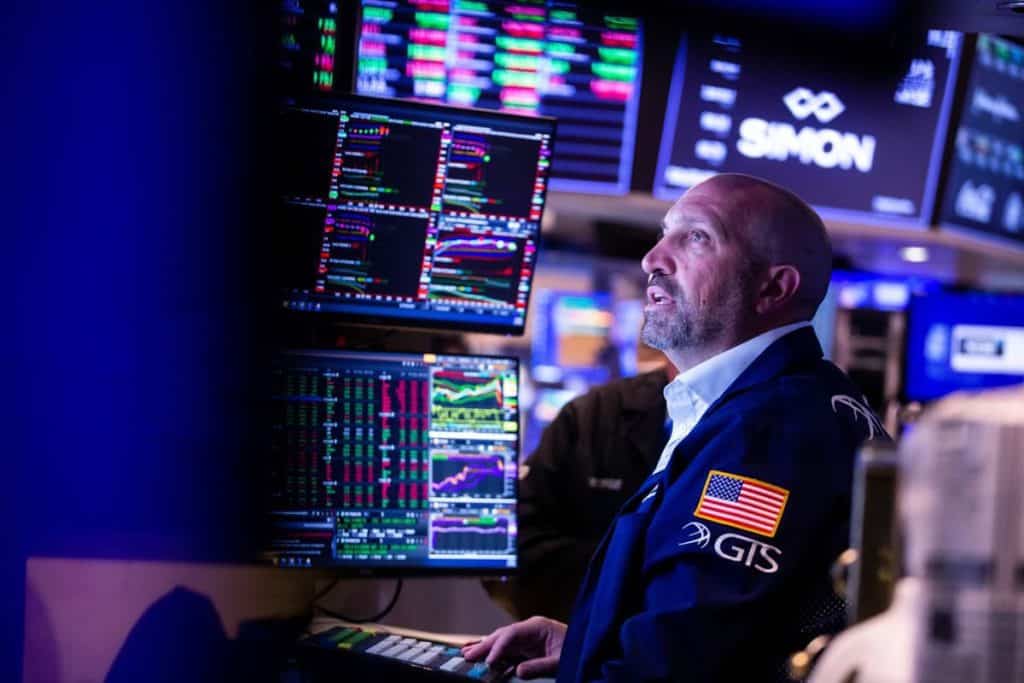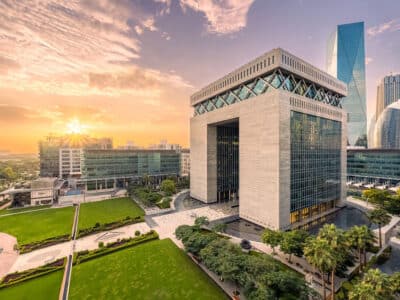In a candid and comprehensive interview, Bhaskar Laxminarayan, Chief Investment Officer, Asia for Julius Baer, shared his insights on his investment philosophy, the global economic landscape, and the ever-evolving role of traditional and digital assets.
His remarks provided a unique perspective on understanding the complexities of the financial world. In an exclusive interview with Arabian Business Laxminarayan said, “There is a difference when wealth is made by the first generation and wealth is received by the second or the third generation, wealth receivers tend to be not so attached to the money.”
According to the investment chief, investing is relatively simple, he believes that “luck is a big factor.”
Laxminarayan suggests that investments should be made close to every individual’s predetermined risk profile and that they should be “able to take the ups and downs in the day-to-day market with equanimity,” avoid worrying about “what happens on a daily basis” and stay away from “constantly looking at the stock market to see what happened with prices,” and as a result of this, they will most likely sustain and even possibly make profits.
Personalised risk profiles: The key to profitable investment
Laxminarayan underscored the importance of individualised risk profiles in investment decisions. He stated that it is not merely about identifying the right place to invest but rather tailoring investments to one’s unique risk tolerance, volatility expectations, and return objectives.
This approach aligns with his belief that investors should remain calm and resilient, avoiding excessive focus on day-to-day market fluctuations. Over time, such a strategy tends to generate more consistent returns compared to those who react impulsively to short-term market movements.
“Let me give you a parallel. You’ll see dust storms here [Dubai], you’ll see rains here, when it happens, as long as it does not disrupt your day-to-day life, it’s just part of the natural course of events. So, when you use that parallel in markets, meaning settlements happen, it’s not like there are liquidity issues. People are still able to go to the bank to withdraw their money, people are able to go to the market and sell their assets. These things happen. That’s what I call us continuity, right?” he calmly explained.

Investing: simplify, discipline, and stay the course
Debunking the common misconception that investing requires intelligence or complex strategies, Laxminarayan emphasised the importance of simplicity, discipline, and maintaining a long-term perspective.
He explained that two common misconceptions are:
- You don’t need to be smart to invest
- You don’t need to bring smarts to invest – “This is possibly more true, people think they need to find some new angle to invest.”
“In a way, I’m happy that nobody seems to understand because otherwise I won’t have a job but it’s true, that’s the long and short of it,” he joked.
He encouraged investors to avoid overcomplicating their investment approach and highlighted that returns are primarily influenced by the two major decisions – asset allocation and staying invested. The key is not to make constant changes but to have faith in a well-thought-out, diversified portfolio.
“I’ll be very honest if you do a 60/40 let’s say 60 percent equity, 40 percent bonds and you choose maybe two or three things that you like as an index, not as individual stocks. Or if you like broad markets, you buy them and you leave it, chances are you’ll be okay,” he advised.

Short-term vs. long-term strategies
During external shocks and market recessions, there inevitably is the existence of short-term investment opportunities. However, Laxminarayan cautioned that these events represent a small fraction of an investor’s journey, typically requiring rapid adaptation.
He reinforced the idea that long-term investing, closely aligned with one’s risk profile, should form the core of any investment strategy. He referred to Warren Buffett‘s perspective that the market is continually climbing over the long term, despite short-term worries.
“Whether you own Google in your portfolio or Amazon does not matter. In fact, it almost never matters. I think most people tend to build portfolios bottom-up. While if you were to build portfolios, you always should do a top-down,” he cautiously suggested.
Gold vs. digital assets
Discussing the role of gold as a hedge against global risk, Laxminarayan offered a unique perspective. He pointed out that gold’s physical nature limits its practicality in large quantities and highlighted the rising relevance of digital assets, particularly Bitcoin, for its portability and security.
“Gold is a difficult topic,” he said, “How much can you carry gold around? Physically, it’s impossible. I think to me, Bitcoin is a better alternative than gold in that sense.”
“The question one needs to answer is, at some point in existing mines, they take out gold at about close to $850 – $900. That’s the cost of taking gold out of the ground. Obviously, it is trading at $1,900 an ounce. So, someone is paying $1000 bucks extra. You need to know why that premium. Is it justified?” he asked.

Laxminarayan viewed Bitcoin as a better alternative to gold in the modern investment landscape. He noted that while Bitcoin has emerged as a digital asset with intrinsic value, other cryptocurrencies should be treated cautiously due to their role as technology platforms.
“That gives you to some extent that it [gold] is possibly not as great a hedge in that sense, I would say I would rather use Bitcoin as my preferred way of doing that simply from a carrying ability, international settle-ability or, you know, usable way of doing things,” he said and moved on to the next topic in question.
Four regimes: The foundation of Julius Baer’s investment philosophy
The investment philosophy and approach for Julius Baer runs on four primary regimes, one that has not been extensively covered in detail in the past but as a result of a new strategy, “It is something we want people to know,” Laxminarayan revealed.
The framework underpins the investment philosophy, known as the “Four Regimes.” This concept is centred on understanding the market’s behaviour through different periods. These regimes are as follows:
Asset prices tend to go up: In this regime, it is understood that asset prices generally tend to rise with minor corrections along the way. This long-term upward trajectory mirrors the natural progression of economies. This is a regime that the investment chief believes correlates to life itself, he said, “You know this is actually true for most of us if you really were to look at real life as well.”
External shocks: Short-term events, such as geopolitical crises (e.g., 9/11), can dramatically alter risk metrics and market behaviour. Laxminarayan emphasized that these shocks are typically temporary and cannot be fully predicted.
Large policy mistakes: Economic downturns can result from significant policy errors, as seen in the global financial crisis. These errors accumulate over time, leading to market recessions. “This is what makes it so simple because this is not rocket science. This is for everybody to see, you can pull up data across times and you see how long economic growth happens and how short recession happens,” he explained.
Market recessions: These shorter-term economic contractions typically last between two to eight quarters, whereas economic growth cycles span approximately 13 to 15 years. He said, “Every decade or so you get one recession, right? So, it’s not that dramatic.”

Laxminarayan’s key takeaway is that understanding these regimes can provide investors with a long-term perspective, helping them stay invested in line with their risk profiles. He emphasised that investors should not chase short-term gains and instead focus on the broader market trends, which drive the majority of returns.
2023 – A year of resilience and continuity
Laxminarayan commended the resilience of financial markets in 2023, highlighting that the year had withstood numerous challenges without significant disruptions. Despite several incidents, including banking crises and bankruptcy filings, the markets remained stable, demonstrating an impressive capacity to absorb shocks.
“I actually think 2023 has been a fantastic year because one, it’s stood against everything,” he said.
“This year has been spectacular in the sense, despite the sort of the shocks we’ve seen, the shock absorbers have been fantastic too. So that’s why I call it normalcy right? This year, we tested it with pretty severe incidents, but nothing happened. Nothing broke,” he added.
He attributed this resilience to a combination of factors, including ample global liquidity, declining inflation, and robust employment figures. Laxminarayan noted that, unlike previous tightening cycles, the current one had not led to significant job losses, instilling confidence in the market.
He explained “It’s not for lack of having accidents this year. There have been so many accidents. Typically, if you were to look at the banking scenario, for example, the collective amount of bankruptcies that we’ve seen or banks that have folded up possibly are multiples of LTCM in the late 90s, possibly rivalling almost equivalent of GFC. Yet nothing happened.”
In fact, he is so optimistic about this year that he describes it as one of the best years he’s witnessed in 32 years of his experience in the market.
India: A global investment powerhouse
When asked if India can be considered as a leading investment destination, he said, “India has always been a very good asset class. India has also had problems with access. So, I would say it’s the access issue that makes it more restrictive.”
Laxminarayan expressed his bullish outlook on India, referring to it as a structural investment story with a bright future. He mentioned that India has consistently demonstrated the potential to create value over the years, driven by factors like corporate governance, entrepreneurship, and a growing ecosystem promoting innovation.
“People now see it as a powerhouse in many different ways. Not just tied to landing on the moon,” he said, referring to the country’s recent historic achievement.
Highlighting the fact that a vast number of senior management around the world is being represented by the Indian diaspora, he said, “capabilities are being seen worldwide more than any other place,” emphasising that India’s structural story remains strong, making it an attractive destination for global investors.
UAE – A beacon of stability
Laxminarayan acknowledged the stability of the UAE in the Middle East, “UAE has been amazingly stable, that’s true,” he said comparing it to other neutrality zones worldwide, such as Switzerland and Singapore.
“I think you get these pockets of places that benefit from not taking any extreme stances and being more business-oriented,” he explained.
The UAE’s commitment to accommodating diverse profiles and fostering a business-friendly environment has contributed to its reputation as a global financial hub.
Laxminarayan provided a cautiously positive outlook for the next five years, foreseeing continued global growth and stability. “We are back into a growth phase, between now and 2030 I think we are still in an upcycle. I think it’s a fairly good time,” he optimistically concluded.








